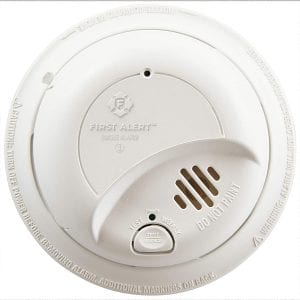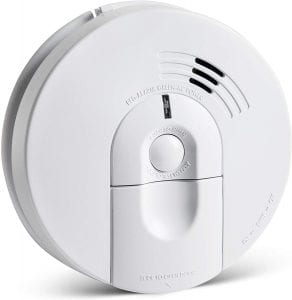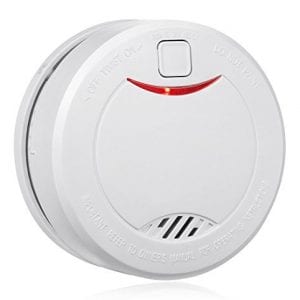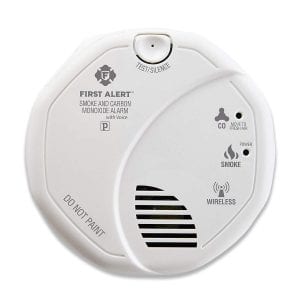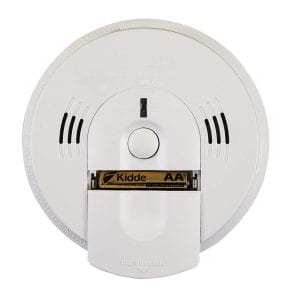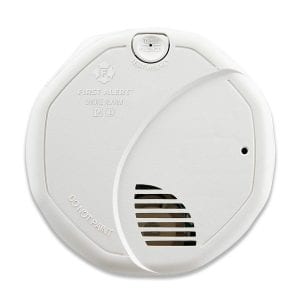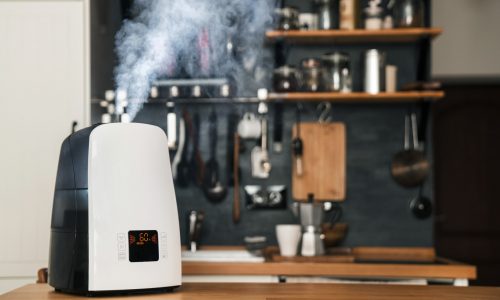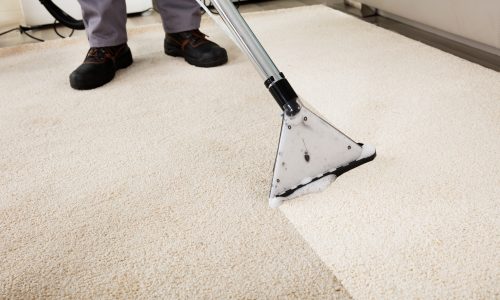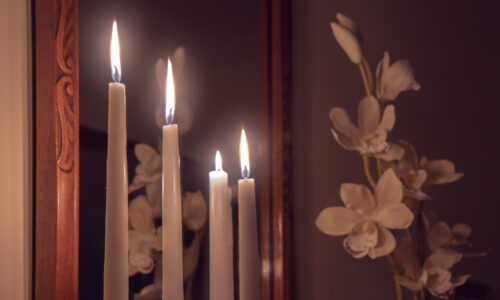The Best Smoke Detector
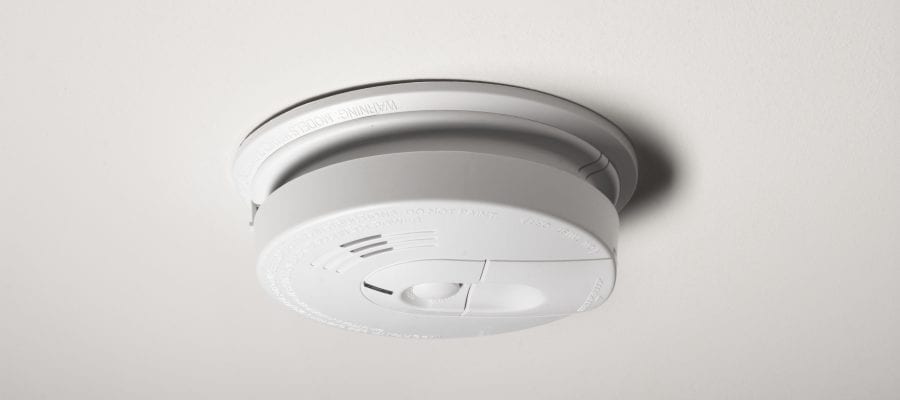
Our Review Process
Don't Waste Your Money is focused on helping you make the best purchasing decision. Our team of experts spends hundreds of hours analyzing, testing, and researching products so you don't have to. Learn more.
Our Picks For The Top Smoke Detectors
- 1. Nest Protect Smoke & Carbon Monoxide Alarm, 3-Pack
- 2. First Alert Hardwired Smoke Detector
- 3. Kidde Hardwire Smoke Alarm
- 4. Alert Pro 10 Year Battery Smoke Detector Fire Alarm
- 5. First Alert Battery Operated Combination Smoke Alarm
- 6. Kidde Intelligent Alarm Battery Operated Combination Smoke & Carbon Monoxide Alarm
- 7. First Alert Dual-Sensor Smoke and Fire Alarm
This easy-to-install smoke detector will alert you to both smoke and carbon monoxide in your home. This smart detector offers a combination of voice, siren and smartphone alerts. It can notify you of dangers whether you are asleep in bed or away from home. The smart voice alerts even tell you what is occurring and how you should proceed.
High-Tech AlarmThis combo carbon monoxide detector and smoke detector hooks up to your home's Wi-Fi and can be monitored from an app.
You won't have to worry about whether you'll hear this smoke detector's alert in an emergency, as it has an 85 decibel alarm. The unit's ionization sensor is also extremely sensitive, which means it will sound the alarm at the first hint of a fire. It's also easy to install and can be ready to go in a few minutes.
Loud AlertThis smoke detector continues to protect your home even if there's a power outage, as it's equipped with a backup battery.
This user-friendly smoke detector will interconnect with other Firex smoke detectors, creating a safety network throughout your home. Although this is a hardwired smoke alarm, it is easy to install. You can also change the backup battery without removing the device. In addition, its low price makes it affordable for any budget.
Easy to InstallA hardwired smoke alarm that's easy to install and affordable.
These small smoke detectors are easy to install. A hush function lets you avoid noisy false alarms. The sealed-in lithium battery also means this model won't require hard-wiring or frequent battery changes.
Smart BatterySmall smoke detectors that don't require frequent battery changes.
Buying Guide
A properly installed, well-maintained and good quality smoke detector can literally save your life and the lives of those you love the most. Deciding the best brand and size for your home can be difficult since so much is riding on the little, plastic devices working as they should.
Battery-operated smoke detectors run solely on batteries, which are easy and affordable to install and replace. You can use a battery-operated detector in virtually any location. Provided the batteries are changed as needed, they will work during power outages as well.
Hardwired smoke detectors are connected directly into your home’s wiring. While they must be professionally installed, many have backup batteries that will last the lifetime of the alarm. So you can feel safe and not worry about remembering to change the batteries.
Many smoke detectors produce a loud, beeping or bleating alarm sound when triggered. This could certainly be ideal to alert you to fire or smoke danger. However, if you have heavy sleepers or young children in your home, they could be confused by or even sleep through the noisy alarm. Devices such as the Nest Protect Smoke and Carbon Monoxide Alarm use voice alerts to explain what is happening. They can awaken you or notify you with spoken, easy to understand warnings.
According to the CDC, at least 430 people die from accidental carbon monoxide poisoning each year in the United States. Considering a combination of smoke and carbon monoxide detector could result in double protection for your home and family. Carbon monoxide can come from leaky furnaces, poorly ventilated wood-burning stoves and many other sources commonly found in homes.
If you have a home security system, you might wish to consider purchasing a smoke detector that will integrate with your current configuration. This could give you increased protection, as many security providers monitor alarms like smoke detectors and can send emergency assistance even if you are away from home or unable to call for help.
Some smoke detectors are compatible with other smart home devices. For instance, devices such as the Nest Protect Smoke and Carbon Monoxide Alarm can be integrated with smart hubs, mobile apps and virtual assistants, like Google Home and Amazon Alexa-enabled devices.
Of course, when shopping for new smoke detectors for your home, office or other location, you must consider how much you want to spend. Fortunately, there are devices that will fit any budget, depending on features, projected lifespan and other attributes.
What to Look For
- Ionization smoke detectors are ideal for detecting small particles associated with quick-burning flames. However, things like steam or burnt food can cause them to go off, so you might not want to use these in or near your bathroom or your kitchen.
- Photoelectric smoke detectors are highly rated for early detection of smoldering fires that emit lots of smoke and large particles. While they have fewer false alarms, making them a good choice for kitchens and steamy areas, they might not detect fast-burning flames as quickly.
- Dual-sensor smoke detectors provide the benefits of ionization and photoelectric smoke detectors. Alternatively, you could install different types of devices in different areas of your home.
- Look for a UL stamp on a smoke detector before you buy it. Underwriters Laboratories (UL LLC) is a global safety company that certifies, validates, tests, verifies, inspects and audits a wide range of products including smoke detectors. The UL certification mark is the single most accepted one in the United States.
- Be sure to check the date on a smoke detector as well. Although recommendations can vary between makes and models, Consumer Reports recommends replacing smoke detectors every 10 years. Note that this should be 10 years after the date the device was manufactured, not the date it was installed. Fortunately, the manufacture date is printed on the underside of smoke detectors.
- The National Fire Protection Association recommends installing smoke alarms inside every bedroom as well as outside each sleeping area. On floors without bedrooms, smoke detectors should be installed in living areas, such as the living room or den, and near stairways to upper levels as well.
- While homes built to earlier standards might be exempt, every state has regulations and standards regarding where and how smoke detectors are installed in residential buildings. Check the regulations or recommendations for your state, as some states require that you make necessary upgrades before renting or selling your home.
- The U. S. Fire Administration recommends testing your smoke detectors monthly. Put a monthly reminder on your phone or calendar to push the button on every detector in your home to make sure the alarm works properly.
- USFA also recommends changing the batteries in battery-operated smoke detectors one to two times per year. An effective way to remember this is to replace them every time you change your clocks for Daylight Savings.
More to Explore
The smoke detector was invented on accident. A Swiss physicist named Walter Jaeger attempted to create a sensor for detecting poison gas in the 1930s. When the device didn’t work as Jaeger intended it to, the frustrated scientist lit a cigarette. He noticed that the smoke moved the sensor’s meter, paving the way for modern smoke detectors.
About three decades later, the Atomic Energy Commission granted the first license to distribute smoke detectors, which were primarily used in industrial settings. These detectors used radioactive materials. By 1969, the AEC allowed homeowners to use smoke detectors. Although modern smoke detectors contain minute amounts of a radioactive material called americium-241, studies have shown them to be safe. In fact, a 2001 study showed that two of these smoke detectors in a home emit the same amount of radiation that people encounter daily from space and the earth.
Between 2005 and 2009, nearly two-thirds of all deaths resulting from
home fires occurred in homes with no smoke alarms or with smoke
alarms that were not working.



